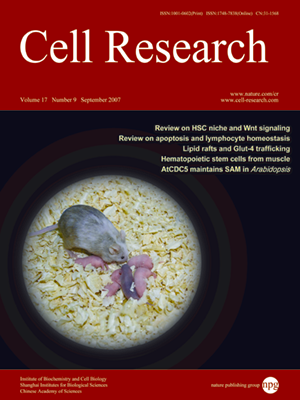
Volume 17, No 9, Sep 2007
ISSN: 1001-0602
EISSN: 1748-7838 2018
impact factor 17.848*
(Clarivate Analytics, 2019)
Volume 17 Issue 9, September 2007: 759-771
REVIEWS
Apoptosis signaling pathways and lymphocyte homeostasis
Guangwu Xu and Yufang Shi
Department of Molecular Genetics, Microbiology and Immunology, Robert Wood Johnson Medical School, University of Medicine and Dentistry of New Jersey, 661 Hoes Lane, Piscataway, NJ 08854, USA
Correspondence: Yufang Shi(shiyu@umdnj.edu)
It has been almost three decades since the term "apoptosis" was first coined to describe a unique form of cell death that involves orderly, gene-dependent cell disintegration. It is now well accepted that apoptosis is an essential life process for metazoan animals and is critical for the formation and function of tissues and organs. In the adult mammalian body, apoptosis is especially important for proper functioning of the immune system. In recent years, along with the rapid advancement of molecular and cellular biology, great progress has been made in understanding the mechanisms leading to apoptosis. It is generally accepted that there are two major pathways of apoptotic cell death induction: extrinsic signaling through death receptors that leads to the formation of the death-inducing signaling complex (DISC), and intrinsic signaling mainly through mitochondria which leads to the formation of the apoptosome. Formation of the DISC or apoptosome, respectively, activates initiator and common effector caspases that execute the apoptosis process. In the immune system, both pathways operate; however, it is not known whether they are sufficient to maintain lymphocyte homeostasis. Recently, new apoptotic mechanisms including caspase-independent pathways and granzyme-initiated pathways have been shown to exist in lymphocytes. This review will summarize our understanding of the mechanisms that control the homeostasis of various lymphocyte populations.
Cell Research (2007) 17:759-771. doi: 10.1038/cr.2007.52; published online 19 June 2007
FULL TEXT | PDF
Browse 1966


